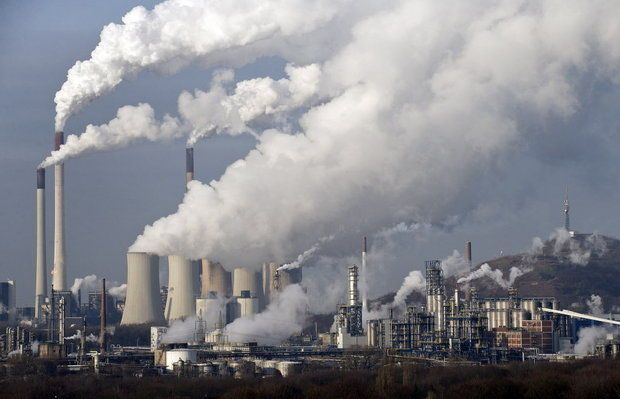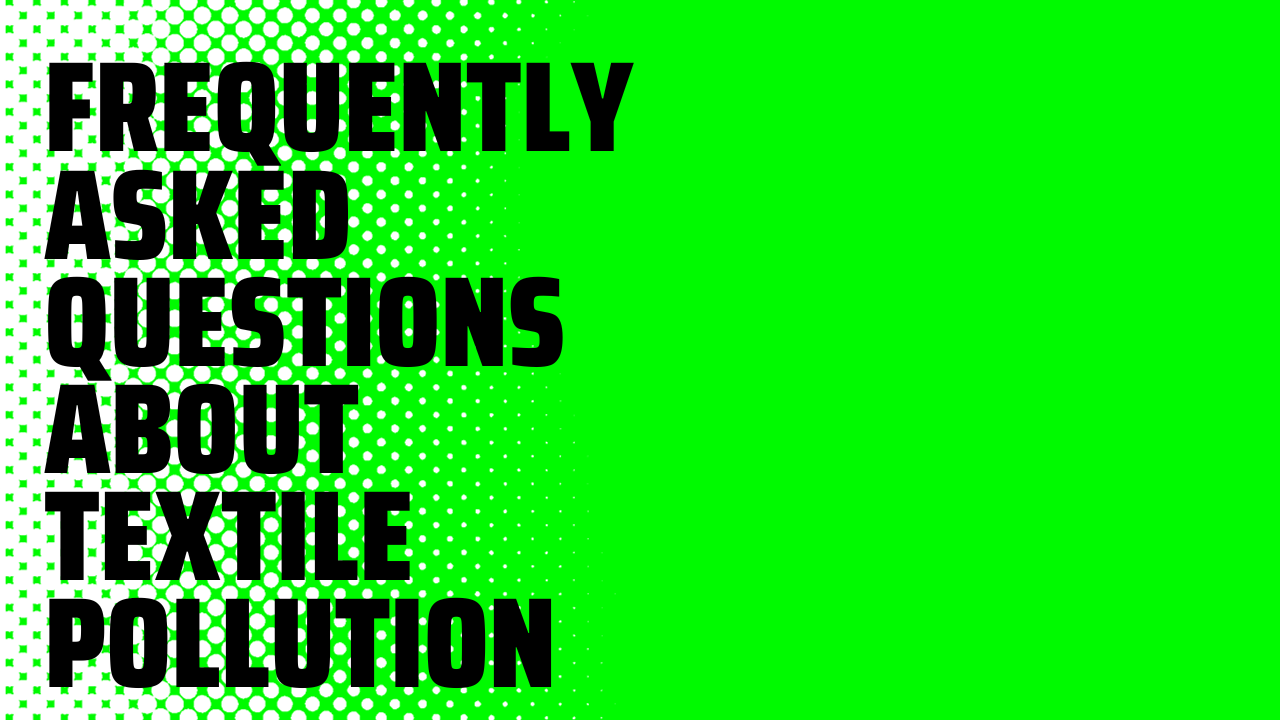The era of Textile Pollution is here and it affects every single one of us.
Whether we are familiar with the term or not, we find ourselves questioning the environmental cost of the textiles that enter and leave our wardrobes.
We have gathered the most frequently asked questions and we have tried to give some simple answers that will enlighten us.
HOW DOES THE TEXTILE INDUSTRY CAUSE POLLUTION?

The textile industry is known to cause pollution through various stages of its production process, from the cultivation of raw materials to the manufacturing and disposal of finished products.
One study conducted by the United Nations Environment Programme (UNEP) titled “Textiles and the Environment: An Overview” provides a comprehensive analysis of the environmental issues associated with the textile industry.
The study highlights that textile production involves the use of large quantities of water, energy, chemicals, and generates significant amounts of waste.
It emphasizes that pollution from the textile industry is a global concern due to its widespread production and consumption.
WHAT ARE THE MAIN SOURCES OF POLLUTANTS IN TEXTILE EFFLUENT?
Textile effluent, the wastewater generated during the textile manufacturing process, can contain a wide range of pollutants that can have adverse effects on the environment and human health.
The main sources of pollutants in textile effluent can be broadly classified into the following categories:
1. Chemicals used in the manufacturing process:
The textile industry uses a variety of chemicals, such as dyes, finishers, and cleaning agents, to produce the desired texture, color, and finish of the fabric.
These chemicals can include heavy metals, volatile organic compounds (VOCs), and other pollutants that can contaminate the wastewater and pose environmental and health risks.
2. Fiber and fabric properties:
The type of fiber and fabric used in the textile manufacturing process can also contribute to the pollutants in textile effluent.
For example, synthetic fibers like polyester and nylon can release microfibers and other pollutants during the manufacturing process, while natural fibers like cotton and wool can release organic matter and other pollutants.
3. Washing and dyeing processes:
The washing and dyeing processes involved in textile manufacturing can also contribute to the pollutants in textile effluent.
For example, the use of harsh detergents and bleaching agents can release chemical pollutants, while the washing process can release dyes and other pollutants from the fabric.
HOW IS TEXTILE WASTE HARMFUL?
Textile waste refers to any discarded or unwanted textile materials, including clothing, fabrics, and other textile products.
The accumulation of textile waste has become a significant environmental concern due to its harmful effects on both human health and the planet.
This comprehensive response will delve into the various ways in which textile waste is harmful.
1. Environmental Impact:
Textile waste poses a significant threat to the environment in several ways.
Firstly, the production of textiles requires vast amounts of resources, including water, energy, and raw materials.
When these textiles are discarded as waste, all the resources used in their production go to waste as well.
This wastage contributes to the depletion of natural resources and exacerbates environmental degradation.
Moreover, most textiles are made from synthetic fibers derived from non-renewable fossil fuels such as petroleum. These synthetic fibers take hundreds of years to decompose in landfills, leading to long-lasting pollution. As a result, textile waste contributes to the growing problem of overflowing landfills and the release of greenhouse gasses into the atmosphere.
When textile waste is incinerated as a means of disposal, it releases harmful pollutants into the air, including carbon dioxide (CO2), sulfur dioxide (SO2), nitrogen oxides (NOx), and volatile organic compounds (VOCs). These pollutants contribute to air pollution and have detrimental effects on human health and ecosystems.
2. Water Pollution:
The textile industry is known for its heavy use of water throughout various stages of production.
Textile waste exacerbates water pollution due to the release of hazardous chemicals during manufacturing processes and improper disposal methods.
Many textile dyes and finishing agents contain toxic substances such as heavy metals, formaldehyde, phthalates, and chlorine-based compounds.
When textile waste is not properly managed or disposed of, these chemicals can leach into water bodies through landfill runoff or improper wastewater treatment.
The contamination of water sources with these toxic substances poses a severe threat to aquatic ecosystems, as well as the health of humans and animals that rely on these water sources.
3. Social and Economic Implications:
The issue of textile waste extends beyond its environmental impact and also has social and economic implications.
The fast fashion industry, characterized by the production of inexpensive clothing at a rapid pace, contributes significantly to textile waste generation.
This industry’s focus on disposable fashion encourages consumers to discard clothing after only a few uses, leading to a constant cycle of waste generation.
In addition to the environmental consequences, textile waste also affects vulnerable communities in developing countries where much of the textile industry is outsourced.
Improper disposal methods, such as dumping or burning textile waste, can lead to the release of toxic pollutants into the surrounding environment.
This pollution can contaminate soil, water sources, and air, posing health risks to local communities.
KNOWLEDGE IS THE KEY
Acquiring knowledge pertaining to textile pollution is paramount in safeguarding the environment.
The textile industry is a significant contributor to environmental degradation, and it is imperative that we understand the impact of textile pollution on our planet.
By gaining a comprehensive understanding of the sources and effects of textile pollution, we can take proactive measures to mitigate its adverse effects.
This includes adopting sustainable practices in textile production, reducing textile waste, and promoting eco-friendly alternatives.
Ultimately, our collective efforts to increase awareness and knowledge about textile pollution will play a crucial role in preserving the environment for future generations.
